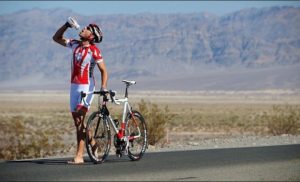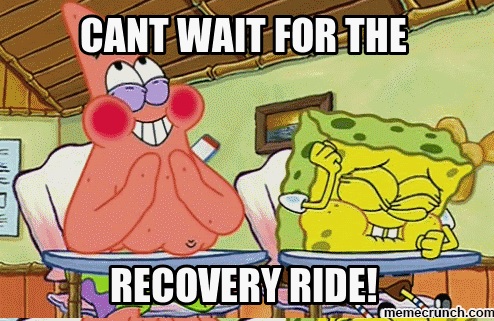In our go-go-go society the focus always seems to be on working out and never on working in. This despite the fact that we actually get stronger, leaner and more fit in the times when we’re resting as opposed to training. Cycling recovery is no different, so today we’d like to share with you how to make the most of your rest and recuperation to be a better, stronger cyclist.
Source: kenopictures – Adobe Stock
Cycling Recovery 101
Your exercise choices determine the stimulus received by the body, and your recovery choices determine the response. With every workout on the bike, lifting session in the gym or cross training exercise through another sport, you are telling your body that you want to get stronger, faster, more coordinated, etc. What are you telling it in between?
Not allowing adequate rest time in between rides or ignoring the integration of other recovery methods will lead to one cranky, broken, bent out of shape cyclist. Some of us are addicted to giving ourselves away, and have never learned how to properly receive the care that we need. If you’re serious about cycling (or just want to improve) you need to understand the difference.
Mental Health & Cycling Fatigue
It’s sexy to “push yourself”, “give it your all” and “never quit”, but trying to do that all the time is the exact opposite of health and balance. We are constantly caught up in comparing ourselves to other people, not realizing they lead a completely different life with their own unique set of gifts and misfortunes.
Social media and every advertisement out there wants to tell you that you’re not good enough, but when it comes to your cycling recovery, you have to realize that isn’t true. Remember to take the performance and training regimens of others with a grain of salt; that you’re your own person participating in this sport for your own reasons.
Whether it’s for competition, recreation or just simple enjoyment, there are many wonderful things about jumping on a bike. A light perspective and pain free body goes a long way in reducing cycling fatigue, and that’s exactly what the rest of this article is designed to teach you about.
Tools For Cycling Recovery
Relieving our achy backs, painful hips and sore legs after cycling is a multifaceted and often complex, individualized issue. Posture, anatomy and various lifestyle factors all have a say. However, there are certain constants that, if adhered to (even loosely), can be a significant contributor to your post cycling recovery and overall improved cycling performance.

Source: Zinkevych – Adobe Stock
Warming Up
Incorporating a warm up into your bike riding routine is one of the most effective (though underused) methods for reducing soreness and promoting post cycle recovery. Warming up before exercise has been shown to mitigate the effects of delayed onset muscle soreness (DOMS), which is one of the worst nightmares for a cyclist.
Supple tissues that have been primed for movement with dynamic exercise perform better and are less susceptible to injury. It’s hard to imagine that a significant part of your cycling recovery takes place before you even get on a bike, but that’s just one of the many influences a pre-ride warm up will have on your performance.
Track Your Training
Simple journals that record your overall feelings before/during/after cycling, total distance, terrain and rate of perceived exertion are great tools to monitor performance over time. If you start to feel symptoms of overtraining, such as mental fog and reduced output on the bike, you can go back in your logs to determine where your recovery has gone wrong.
The truth is that you can have all the best resources at your disposal, but with no way to keep track of them it will be difficult to utilize the right one at the right time. Developing a stress-free journaling practice around your cycling will start to create associations between how different rides and periods of training work with your life and body. Without a plan, you plan to fail.
Recovery Rides
If you still want to jump on the saddle without the stress of a full blown workout, then integrating recovery rides into your training is a direct way of doing so. The recovery ride is, at its core, just reduced intensity riding that places the focus less on performance and more on movement and blood flow.
There is one significant benefit to recovery rides not often talked about in the cycling community, and that is learning to control your exertion. Forget the romantic and ego-fueled ideas about perseverance, grit and will. Our sport requires those things, but not all the time. A mature athlete knows when to attack and when to submit.
Self Myofascial Release (SMR)
Using a foam roller or lacrosse ball to give your muscles a gentle massage is a low cost method for long-term health and bodily maintenance. They’re widely available and probably hanging out in the corner of your gym! These implements, when used correctly, have been shown to increase joint range of motion and reduce muscle soreness post exercise.
Not only is this a relaxing practice that you can do almost anywhere, it helps to break up all those stiff, grouchy tissues in your legs and back from being on the saddle. You get to know your muscles in a new way by finding different pressure points (ouch!) and knots that you didn’t know were there, then giving those areas some much needed love and attention.
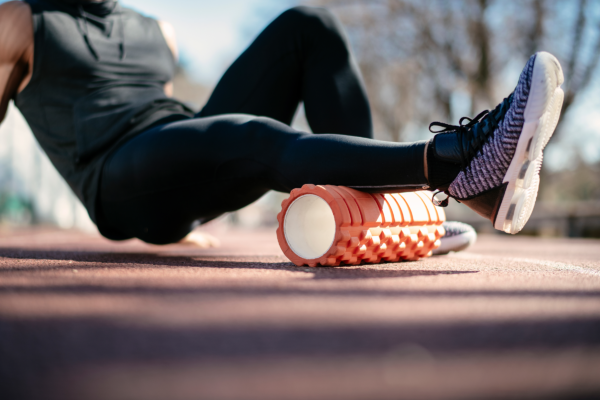
Source: JustLife – Adobe Stock
Today we wanted to give you a glimpse into our Roll & Release series here at Dynamic Cyclist! We are an all-inclusive training platform designed specifically to train cyclists and help them ride pain free. Our coach Alisha is going to take you through a foam rolling exercise you can do from home, designed to target the hip flexors!
Complete Recovery Plan For Cyclists
Dynamic Cyclist offers a completely integrated training and recovery experience for cyclists of all levels! Stretching, mobility, injury prevention and strength workout routines all in one convenient, easy to use online platform. We hope you join us in the journey to becoming stronger, better cyclists who RIDE PAIN FREE!
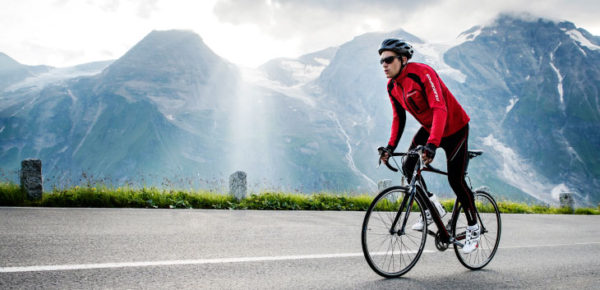
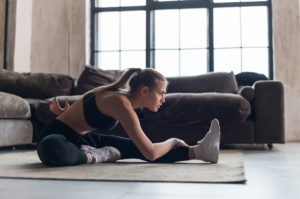 Stretch & Roll
Stretch & Roll